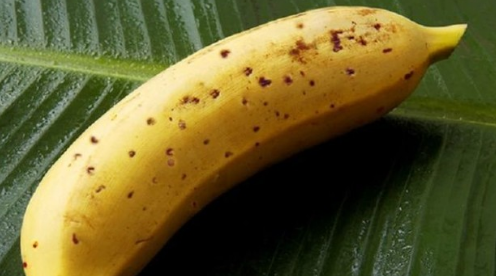Japanese researchers create bananas whose skins can be eaten
A company in Japan has managed to create a banana that you do not need to peel the skin before eating.
Banana Mongee comes from the Gros Michel variety, which is a major variety that grew globally until the mid-1950s
Banana mongee (pronounced & apos; mon-gay & apos; and mean & apos; amazing & apos;) has edible skin that is claimed to taste like vegetables and has a lettuce-like texture.
This banana has been a loving endeavor for 68-year-old Setsuzo Tanaka from Okayama Prefecture who has spent the last 40 years to perfect the technique of growing this Mongee banana.
Banana seeds are frozen, then thawed and replanted, where the company, D & amp; T Farm, calls this method a "freeze-thaw awakening"
By D & amp; T Farm, the process makes the plant grow quickly, cutting the banana cultivation process that usually takes two years to just six months.
Bananas ripen quickly, causing the skin to be thin, supple and edible.
Roots in the past
Mongee bananas were developed from Gros Michel banana varieties, which were probably the kind of bananas they used to eat in the 1950s and earlier.
This is a major in-banana variety that circulates globally from the early 1900s to the 1950s, when plantations in Central America were destroyed by fusarium wilt disease that became known as Panama disease.
A newer type of disease sourced from a ground-borne fungus, Panama TR4, now affects the Australian Cavendish banana plant.
Setsuzo Tanaka's desire to grow a tropical Gros Michel banana in the cool climate of Japan is driven by his own memories of being a small banana when the bananas are in the moment the fruit of this one is still classed as a sumptuous meal.
"He developed Mongee bananas as a hobby.
"The reason why banana peels can be eaten is the relatively thinner Gros Michel variety of skin, compared to bananas imported into Japan."
Safe and sweet
The company opposes genetic modification and Mongee banana plants are not treated with any chemicals, which allow the skin to be eaten safely.
"We do not use chemical fertilizers and there are no natural enemies of bananas in Japan, so this is a non-pesticide planting, & quot; Tanaka said.
The fruit itself is very sweet, with the sugar content recently measured showing 25.8 grams per 100 grams.
In comparison, Cavendish bananas, which are the main commercial varieties today, have about 18 grams of sugar per 100 grams.
According to Mr. Tanaka, eating fruit and skin provide additional nutrients.
"Banana peels can contain vitamin B6 and magnesium and are rich in tryptophan and there is also potassium, polyphenols, but there are plenty of water soluble vitamins, especially iron," he said.

Wow!